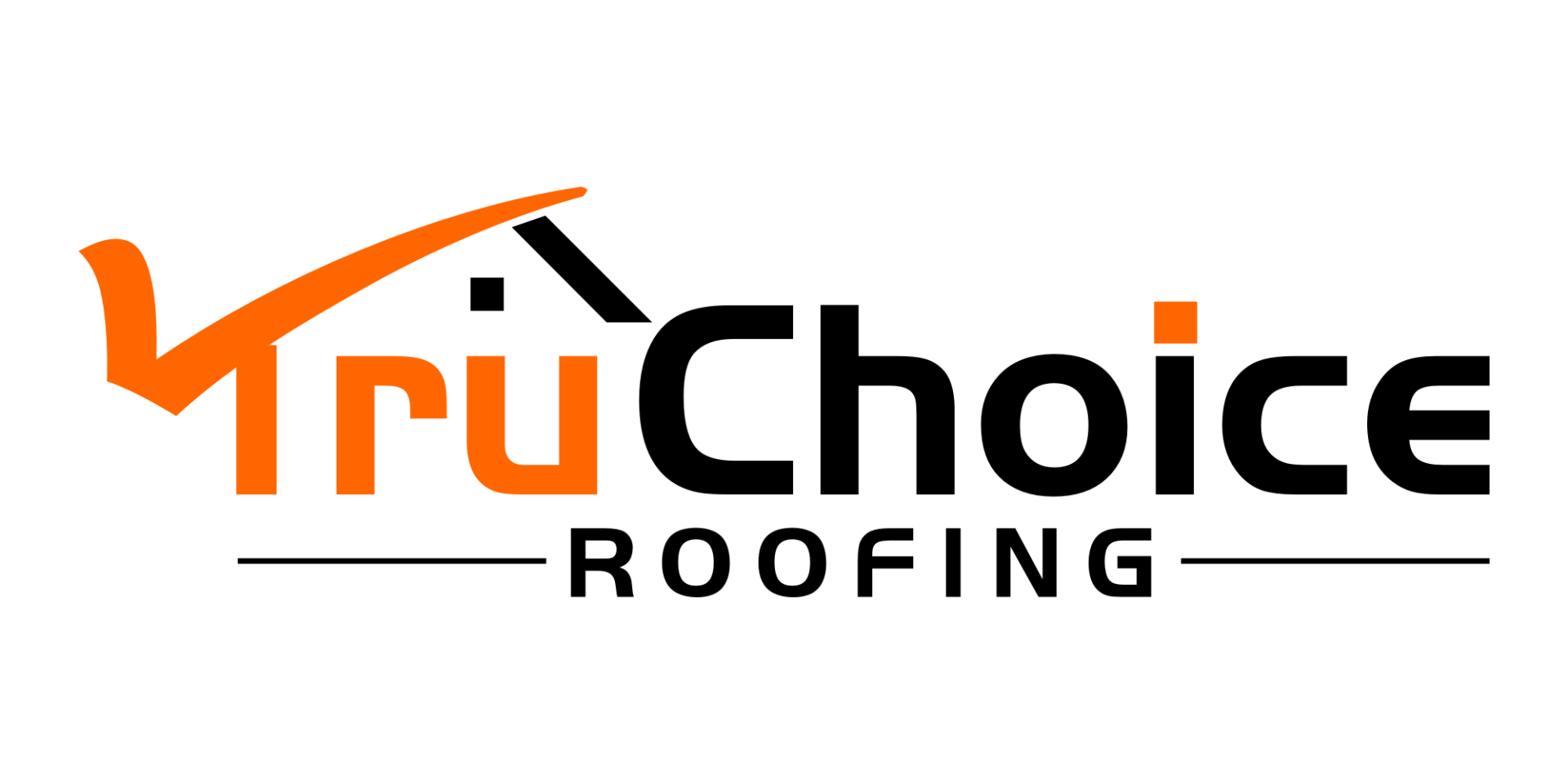Metal Roofing vs. Shingle Roofing: Which Material Should You Choose?
Metal roofing and shingle roofing are both viable options to choose for your next roofing project, but there are distinct benefits, drawbacks, and differences to know of before you buy.
Metal vs Shingle Consultation

If you’re in the market for a new roof, you might be questioning the type of roof that will work best for you and your home or building. And while it’s great to have so many options, such as asphalt shingles,
metal, wood, tile, or concrete, it can also be overwhelming to weigh all the advantages and disadvantages of each type of roofing material.
Luckily, there’s not just one answer for every building, which gives you the freedom to discover the available options, ask questions, and finally make a choice based on factual research.
Here at TruChoice Roofing, we think it’s important to give an honest comparison of everything you need to know about metal roofing systems and asphalt shingle roofing so the decision is easier for you. In this article, expect to learn about:
- The advantages and disadvantages of metal roofing
- The advantages and disadvantages of asphalt shingles
- Important considerations to keep in mind before you choose
Metal Roofing: Advantages, Disadvantages, & Characteristics
When it comes to metal or shingle roofing, metal roofing is the more complex option requiring specific techniques, experienced installers, and more pieces/parts to make it succeed. That being said, metal roofing is actually more common than you may think or notice, especially if you live in an environment with extreme weather conditions. In addition to lasting decades longer than asphalt shingles, metal roofing offers the versatility and variety of options that most other roofing materials lack. Let’s dive deeper into the benefits and drawbacks associated with this roofing material.
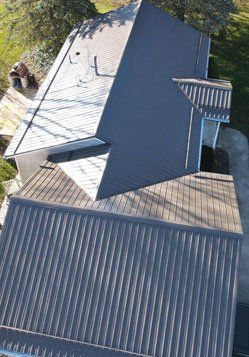
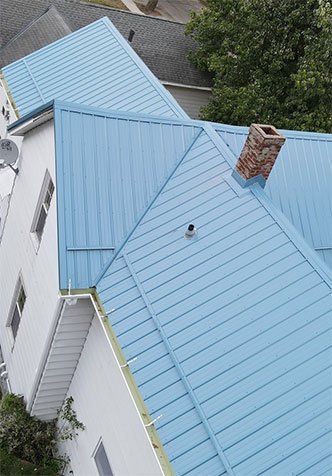
Advantages of Metal Roofing
Disadvantages of Metal Roofing
Higher One-Time Cost
It’s true, metal roofing is more expensive than shingle roofing as a one-time cost. In addition to the higher cost of materials, there also could be a higher price point for labor and the equipment needed to complete the job; however, it’s dependent on the installation company.
Limited Qualified Contractors
Finding a qualified and experienced metal roofing contractor or installer will make or break an installation, especially since nearly all potential problems with metal roofing stem from some kind of installer error. When compared to shingle roofing installers, there are significantly fewer installers who are equipped and skilled at installing metal roofing.
More Labor Intensive
Metal roofing is a precision installation that is much less forgiving than a shingle roof installation. There is virtually zero room to make errors, which is why metal roofing must be installed by a trained craftsperson. This typically means it’s a little more of a labor-intensive process that could take up more time.
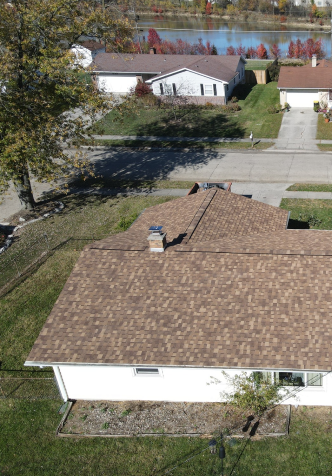
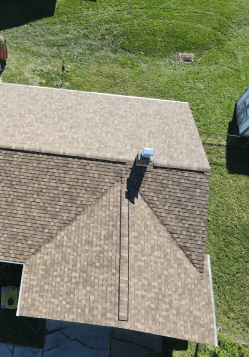
Shingle Roofing: Advantages, Disadvantages, & Characteristics
Shingle roofs are everywhere, and there’s no doubt that shingles are more common when compared to metal roofing. Most people automatically think of shingles when they think about roofing because it’s been the traditional choice on many homes and businesses for the last century. There definitely are many benefits to having a shingle roof installed, most of which hinge on its low upfront cost, ease of installation, and access to materials. Let’s get into more of the advantages and disadvantages of a shingle roof.
Advantages of Shingle Roofing
Disadvantages of Shingle Roofing
ADVANTAGES
Economical in the Short Term – As mentioned before, shingles are cheaper than metal roofing as a one-time cost (normally less than half the price of a metal roof), which appeals to a lot of homeowners. This fact alone accounts for the vast majority of shingle installs. For reference, please view the cost comparison above.
Easier to Install & Replace – Shingles require less time and labor for both installation and replacement. Shingles come prepackaged and ready to be immediately nailed to the deck (unless cuts are required). With metal roofing, you have to handle finished panels that could be cumbersome, attach the metal panels to the decking using screws instead of a nail gun, connect the panels together, and finally install the flashing (usually consists of multiple metal pieces). All of this requires more time, labor, and skill on the part of the installer.
Less Expensive Repairs – Going along with the ease of installation and replacement, shingles are also much easier and cheaper to fix in the event a failure occurs. Most shingles can be removed one at a time near the source of an issue and require fewer materials to fix. Metal roofing is more complex because the full-length panels are all connected together and more difficult to replace one at a time.
More Installers – Shingles are relatively simple and easy to install, which is why there are more contractors who are able to install shingles than metal roofing. While it’s still important to find a qualified and experienced installer, it’s generally easier for consumers to find contractors who can install a shingle roof.
Foot Traffic – The ability to walk on or put weight on shingle roofing is another reason that shingles are easier for the installers. Once they have been secured to the structure, the shingles can be walked on or used as support for the installer while providing greater traction. With metal roofing, you want to minimize how much foot traffic the metal receives, as it could dent, scuff, or buckle under pressure.
Readily Available – Depending on where you live, shingles are commonly sold at local distributors and big box retailers.
Coast-Friendly – Metal roofing and shingles can both be installed in coastal regions, but the warranty on a steel metal roof is usually not offered on a structure within a certain distance from the coast. Most coastal applications require the use of an aluminum system to receive any kind of warranty from the manufacturer. Shingles, specifically asphalt or composite shingles, are heavier and easier to replace in the event they sustain wind damage, which is a good possibility along the coast if your project is in a high-wind zone or prone to hurricanes. That being said, it’s important to know the area in which your project is located and the wind rating needed for your roof system based on that location.
More Warranty Coverage – Shingle roofing can come with a number of warranty offers from both the manufacturer and the contractor. For example, popular problems covered by shingle warranties:
- Manufacturer error
- Material defect
- Algae growth
- Maximum wind-resistance limit (based on the type of shingle)
- Contractor error
What to Consider Before You Choose a Metal or Shingle Roof
Your Budget
Your Roof Design
Your Property’s Lifecycle
Your Environment
Your HOA or Municipality
Qualified Contractor Availability
What to Consider Before You Choose a Metal or Shingle Roof
So, when it comes to metal vs. shingle roofing, which should you choose?
Truthfully, both are great options — it just depends on your individual needs.
